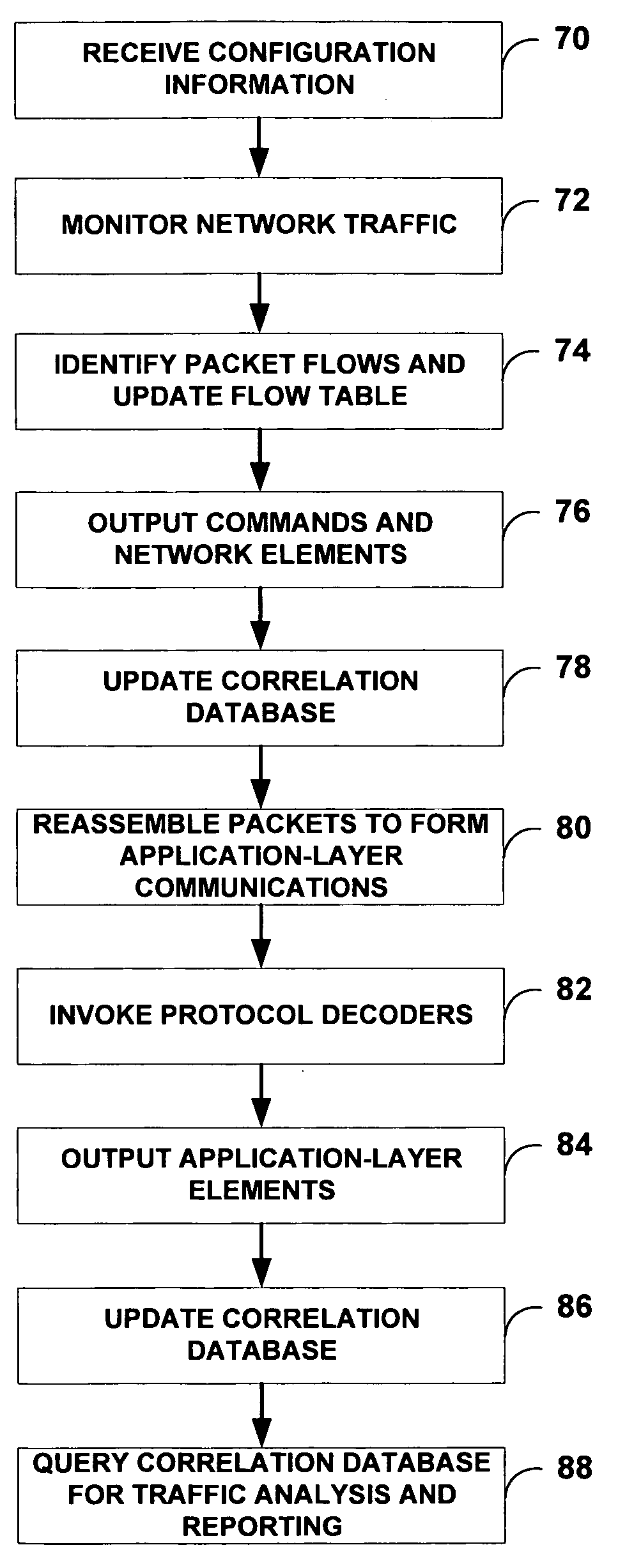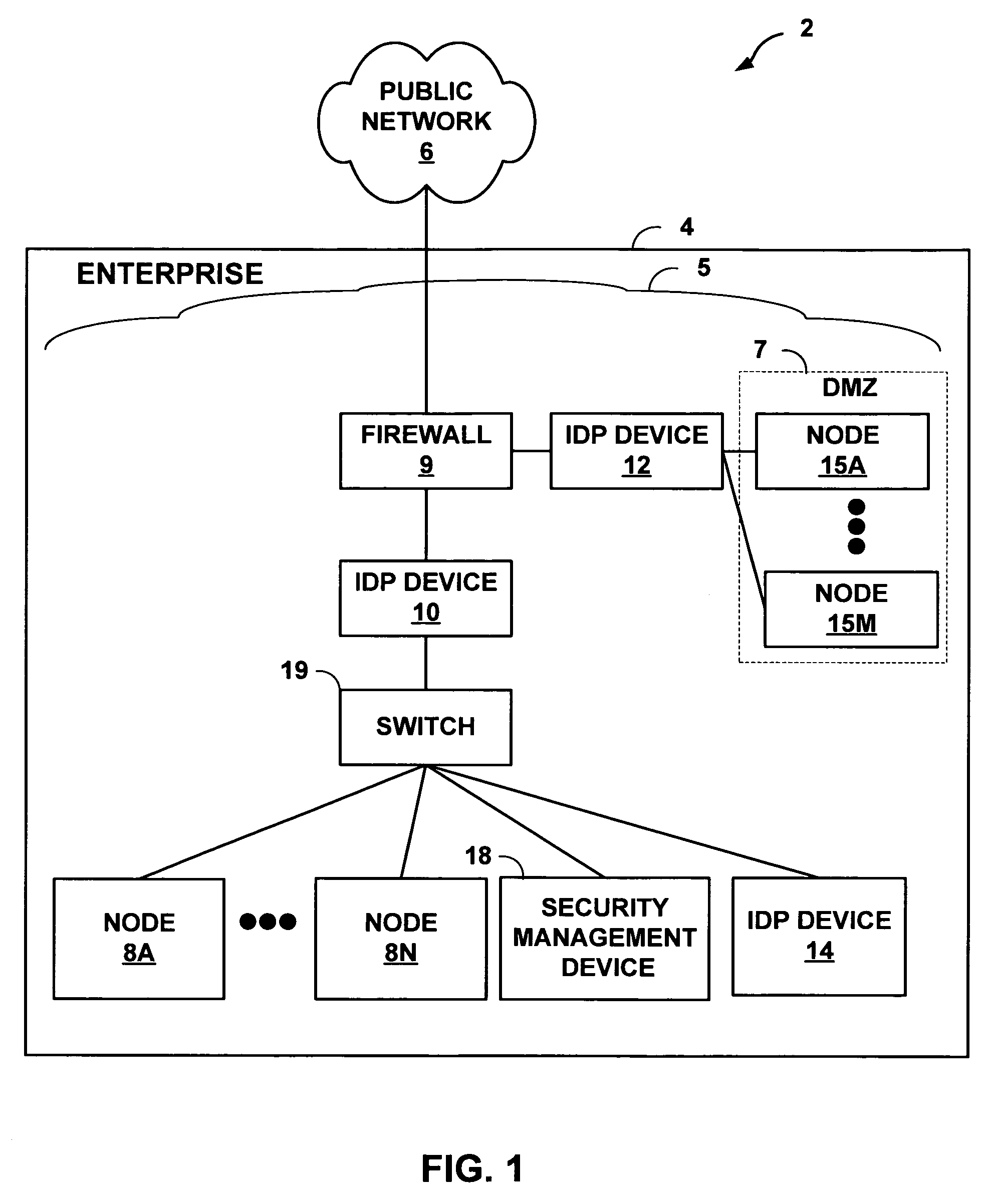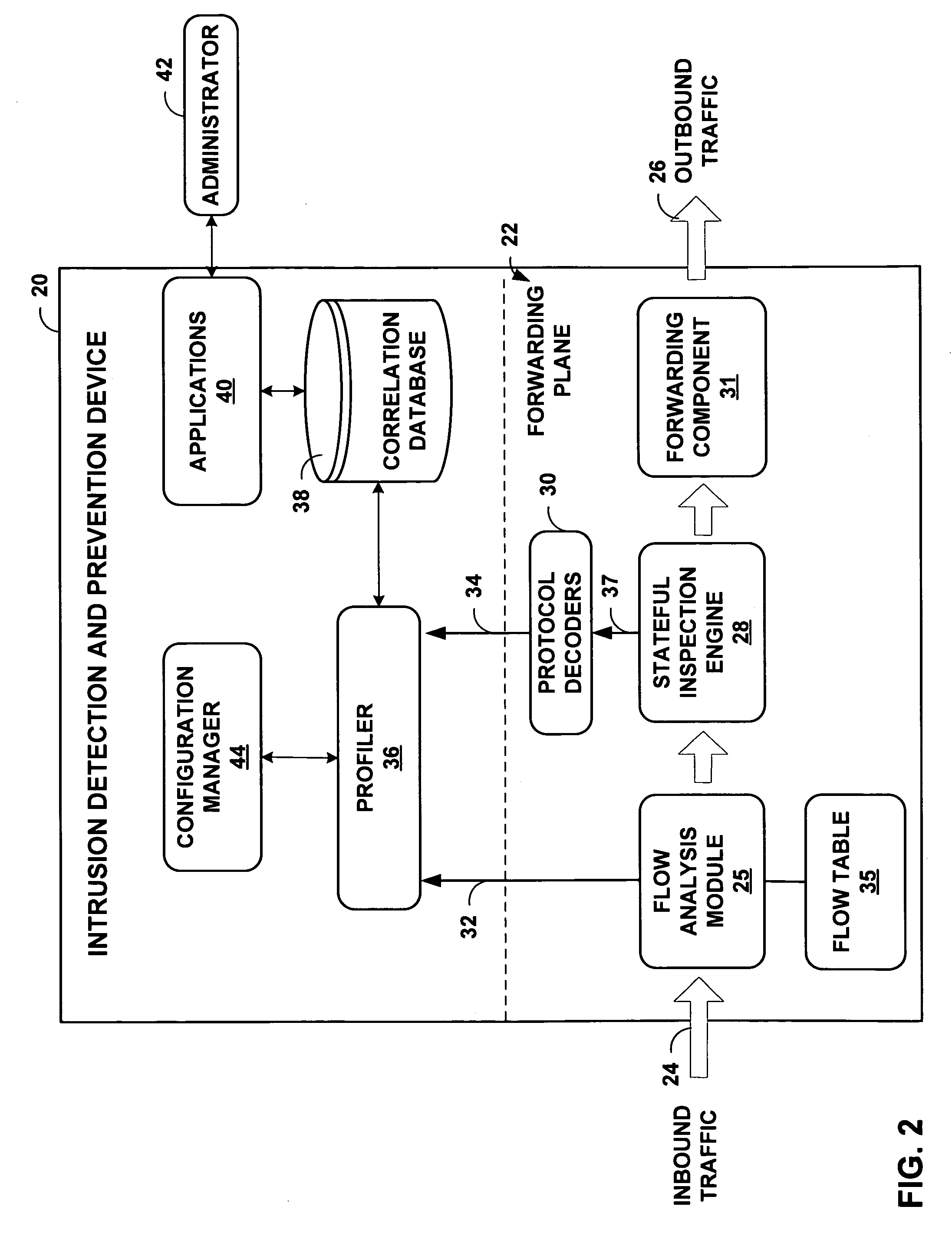Application-layer monitoring and profiling network traffic
a network traffic and application-layer technology, applied in the field of computer networks, can solve the problems of unwanted applications or services, different versions different vulnerabilities and potential security risks of each version of a particular protocol or service, so as to preserve the security posture of the enterprise and efficiently communicate the application-layer information
- Summary
- Abstract
- Description
- Claims
- Application Information
AI Technical Summary
Benefits of technology
Problems solved by technology
Method used
Image
Examples
Embodiment Construction
[0018]FIG. 1 is a block diagram illustrating an exemplary system 2 in which enterprise 4 includes a private enterprise computing network 5 that is coupled to public network 6, such as the Internet. Firewall 9 protects enterprise network 5 and, in particular, internal computing nodes 8A-8N. Computing nodes 8A-8N (computing nodes 8) represent any private computing device within enterprise network 5, including workstations, file servers, print servers, database servers, printers and other devices.
[0019]In addition, firewall 9 may provide a “demilitarized zone” (DMZ) 7, which represents a semi-private area of enterprise network 5 that supports limited access by public network 6 via specific communication protocols. For example, client devices (not shown) within public network 6 may have limited access to nodes 15A-15M via the hypertext transport protocol (HTTP) or the file transfer protocol (FTP).
[0020]In the example of FIG. 1, enterprise network 5 includes intrusion detection and preve...
PUM
 Login to View More
Login to View More Abstract
Description
Claims
Application Information
 Login to View More
Login to View More - R&D
- Intellectual Property
- Life Sciences
- Materials
- Tech Scout
- Unparalleled Data Quality
- Higher Quality Content
- 60% Fewer Hallucinations
Browse by: Latest US Patents, China's latest patents, Technical Efficacy Thesaurus, Application Domain, Technology Topic, Popular Technical Reports.
© 2025 PatSnap. All rights reserved.Legal|Privacy policy|Modern Slavery Act Transparency Statement|Sitemap|About US| Contact US: help@patsnap.com



